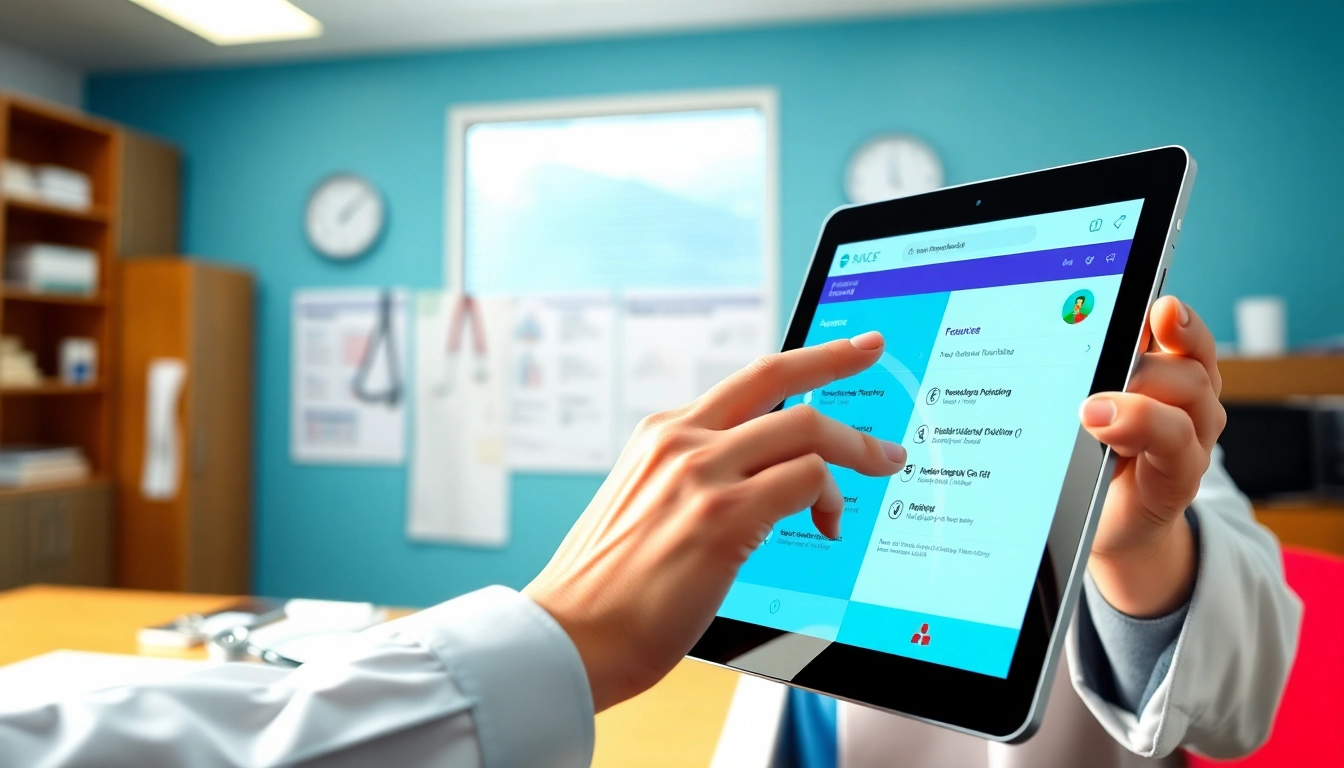Understanding E-Prescribing Software
Definition and Importance
E-prescribing, short for electronic prescribing, is a digital process that allows healthcare providers to send prescription medications directly to pharmacies electronically. This process replaces the traditional practice of writing prescriptions on paper. E-prescribing plays a crucial role in modern healthcare, as it improves the efficiency of prescription management, enhances patient safety, and enables better accessibility to medication information. The integration of electronic systems has revolutionized how prescriptions are created, transmitted, and managed, making it a vital component of healthcare technology.
With the rise of digital health solutions, e-prescribing software has become increasingly essential for streamlining workflows in healthcare settings. By utilizing features of eprescribing software, providers can ensure accurate medication distribution and minimize risks associated with medication errors.
How E-Prescribing Software Works
E-prescribing software connects healthcare providers with pharmacies and other strategic partners through secure electronic networks. When a prescriber decides on a medication, they input the prescription details into the software. This information is then sent to the pharmacy in real-time, allowing for immediate processing.
The software typically includes patient databases that store medication histories, allergies, and other critical information. This data integration allows prescribers to view a patient’s complete medication profile when prescribing drugs, ensuring safe and effective treatment plans.
Key Benefits of Using E-Prescribing
The implementation of e-prescribing software offers numerous advantages for healthcare providers, pharmacies, and patients alike. Some of the key benefits include:
- Improved Efficiency: E-prescribing reduces the time spent on managing paper prescriptions and improves communication between providers and pharmacies.
- Enhanced Patient Safety: By eliminating handwritten prescriptions, e-prescribing minimizes the chances of errors due to illegibility or miscommunication.
- Cost-Effective: E-prescribing can reduce operational costs associated with printing and handling paper prescriptions.
- Better Medication Adherence: Automated refill reminders and alerts help patients stay on track with their medication regimens.
Key Features of E-Prescribing Software
User-Friendly Interface
A critical aspect of any software solution is its usability. E-prescribing software is designed with intuitive interfaces that allow prescribers to navigate quickly. Features such as drag-and-drop functionalities, customizable dashboards, and search capabilities enable healthcare providers to access information efficiently. A user-friendly interface not only provides ease of use but also reduces the time needed for training new staff.
Medication Decision Support
Medication decision support is fundamental in e-prescribing systems. This feature includes built-in algorithms that alert prescribers about potential drug interactions, allergies, and duplications. For instance, if a provider attempts to prescribe a medication that interacts with another drug the patient is taking, the system will highlight the concern, enabling the prescriber to make informed decisions. The ability to consult evidence-based resources directly within the e-prescribing software enhances the overall quality of care.
Integrated Patient Medication History
Access to a patient’s comprehensive medication history is one of the significant benefits of using e-prescribing software. This feature allows healthcare providers to view a patient’s past prescriptions, current medications, allergies, and any adverse drug reactions in real-time. By having this information at their fingertips, providers can make informed prescribing decisions, thereby reducing the risks of adverse events and improving patient outcomes.
Enhancing Patient Safety with E-Prescribing
Preventing Medication Errors
Medication errors can occur due to various factors, from illegible handwritten prescriptions to miscommunication between healthcare stakeholders. E-prescribing significantly reduces these risks by ensuring clear and accurate transmission of prescription orders. The use of standardized formats minimizes confusion and discrepancies. Furthermore, these systems can automatically flag medications that are contraindicated or have dosing errors, fostering safer prescribing practices among providers.
Drug Interaction Alerts
Drug interactions can have severe consequences for patients if not identified early in the prescribing process. E-prescribing systems are equipped with real-time drug interaction alert mechanisms that notify prescribers of potential dangerous combinations. These alerts can be customized based on individual patient factors, such as age, weight, and medical history, further enhancing the precision of patient care.
Access to Real-Time Formulary Checks
Another critical feature of e-prescribing software is the ability to conduct real-time formulary checks. This function ensures that prescribers are aware of what medications are covered by a patient’s insurance plan before they finalize a prescription. Prescribers can look into alternatives if a prescribed medication is not covered, thus helping patients avoid out-of-pocket expenses and ensuring that they receive medications that are both clinically appropriate and affordable.
Implementation Strategies for Providers
Selecting the Right E-Prescribing Software
Choosing the right e-prescribing software is crucial for any healthcare provider looking to transition from paper-based systems. Considerations such as the software’s features, integration capabilities with existing electronic health record (EHR) systems, and user support must influence the selection process. Conducting thorough research and potentially participating in demonstrations can help stakeholders understand the software’s capabilities and how it aligns with their practice’s workflow.
Training Healthcare Staff
Even the most advanced e-prescribing systems can falter without adequate training for the staff who will use them. Implementation should include comprehensive training sessions tailored to all users, ranging from prescribers to administrative staff. Continuous education and access to troubleshooting resources will ensure that the system is used optimally and that all staff members are comfortable with the technology.
Measuring Success and Outcomes
Evaluating the success of e-prescribing software implementation is essential to determine its impact on the practice. Metrics such as the reduction in medication errors, time saved in processing prescriptions, patient satisfaction levels, and cost savings should be monitored. Collecting feedback from both staff and patients provides insights into how effectively the system is enhancing workflow and patient safety, allowing for ongoing improvements.
Future Trends in E-Prescribing Software
Integration with Other Healthcare Technologies
As healthcare technology continues to evolve, the integration of e-prescribing software with other platforms will become increasingly vital. Future trends indicate a shift toward more interconnected systems that allow for seamless data sharing between EHRs, billing systems, and pharmacy networks. This integration will provide healthcare providers with a holistic view of patient care, making treatment decisions more informed and coordinated.
Data Security and Compliance
With the increased use of electronic health records and e-prescribing comes a heightened focus on data security and compliance with regulations, such as HIPAA. It is essential that e-prescribing software providers implement robust security measures to protect patient information from unauthorized access or breaches. Regular assessments and updates to compliance protocols will be crucial in maintaining trust and safeguarding sensitive data.
Continued Innovations in Patient Care
Looking forward, the future of e-prescribing software will likely involve continued innovations that enhance patient engagement and care outcomes. Features such as patient portals for direct prescription requests, telehealth integration, and AI-driven analytics tools will transform how prescriptions are managed and delivered. As the demand for personalized medicine grows, e-prescribing innovation will play an integral role in supporting tailored treatment plans, ultimately leading to improved patient satisfaction and health results.



